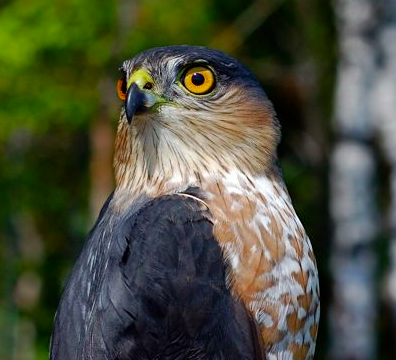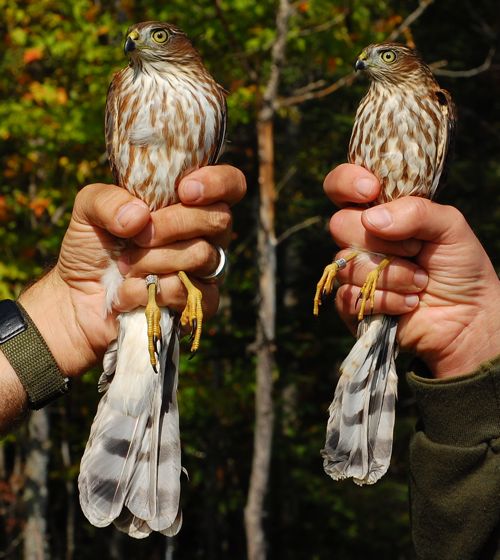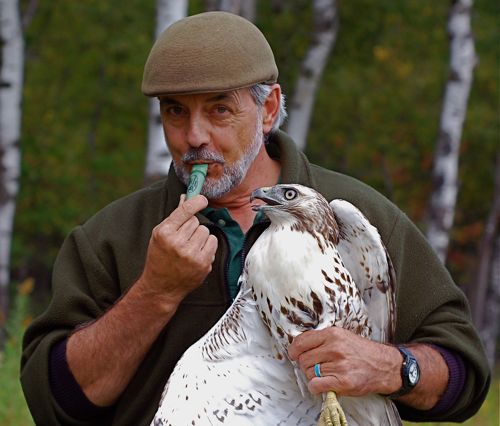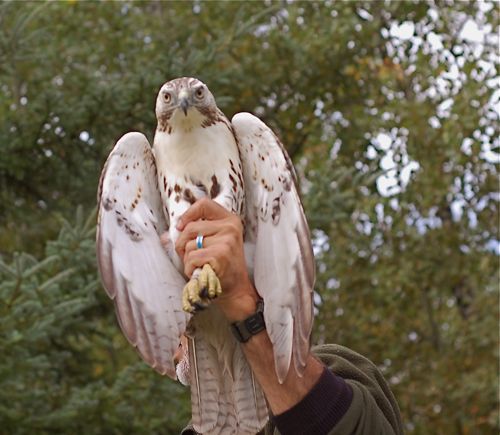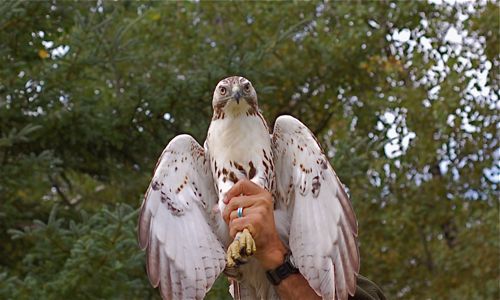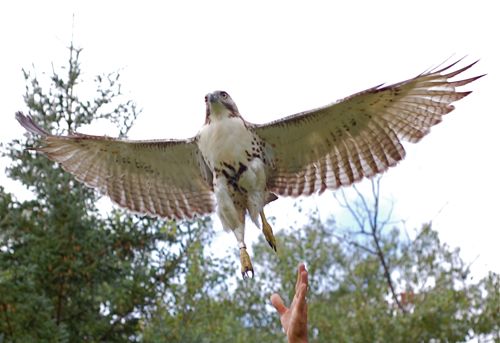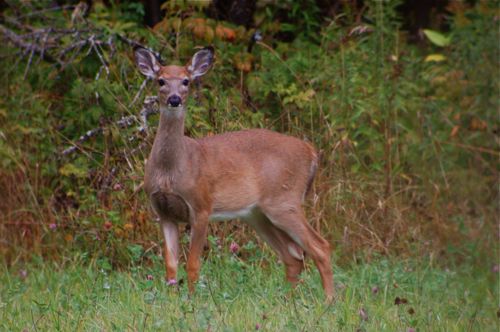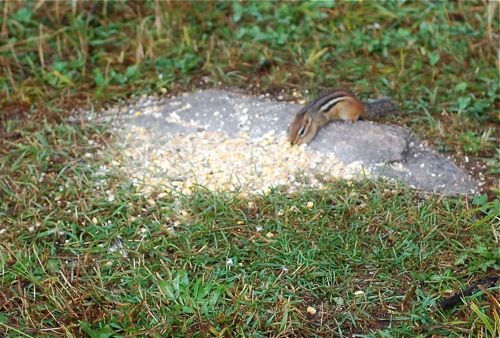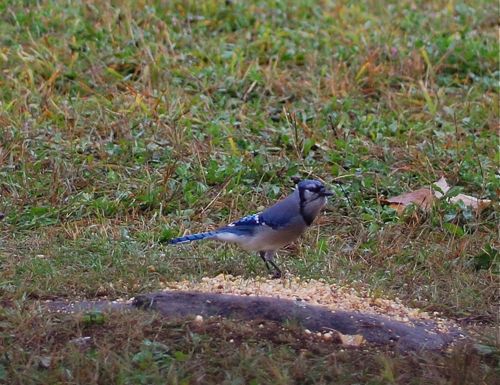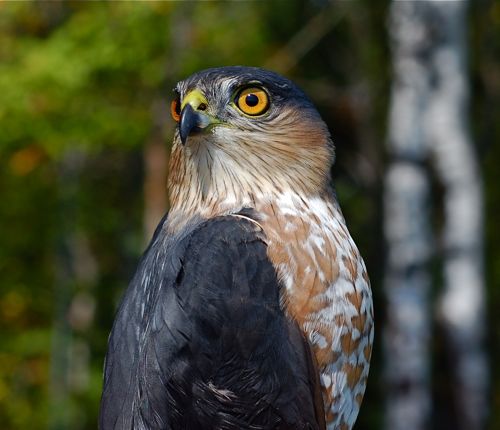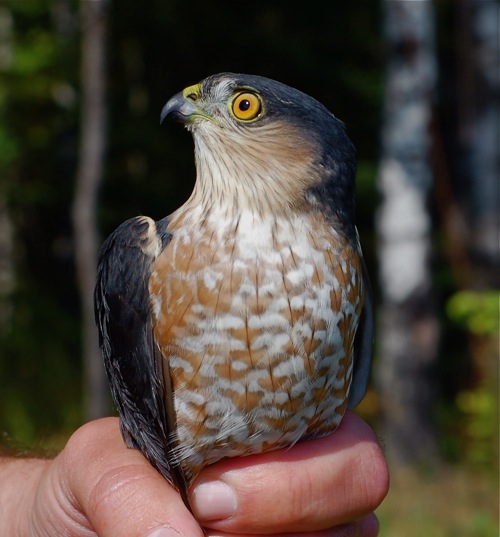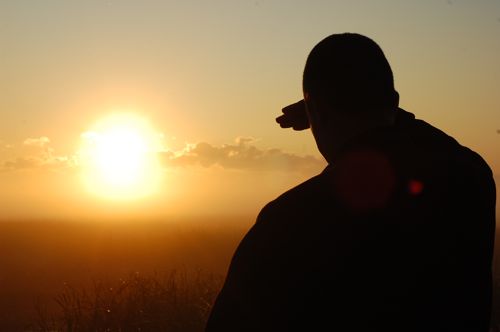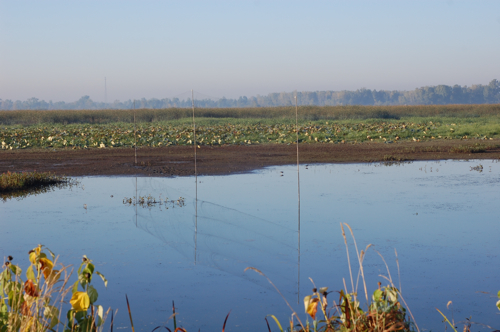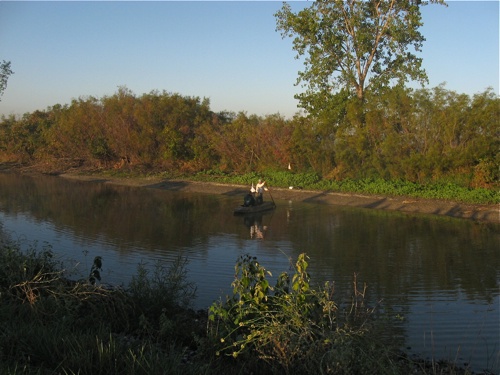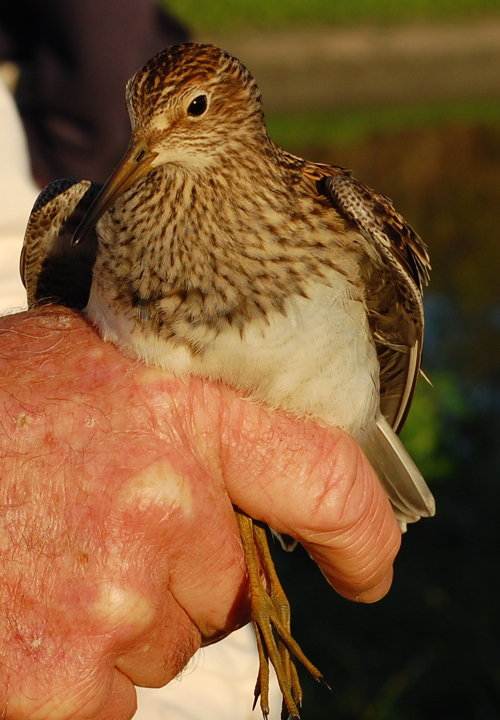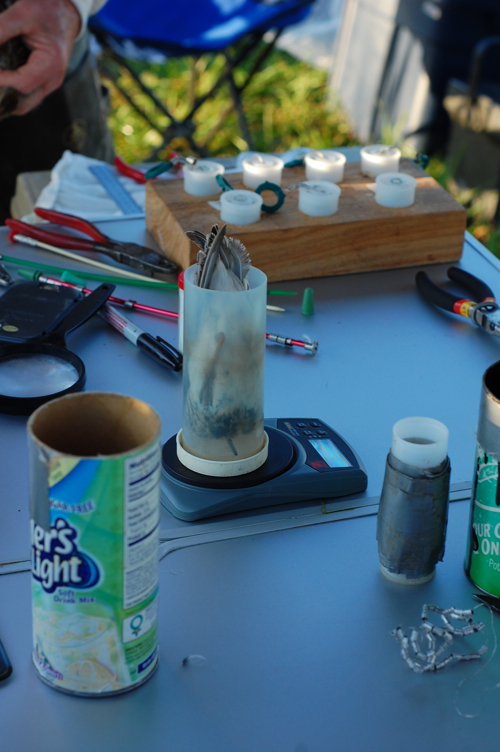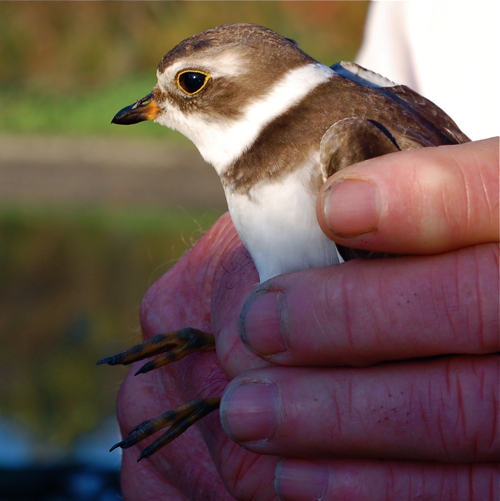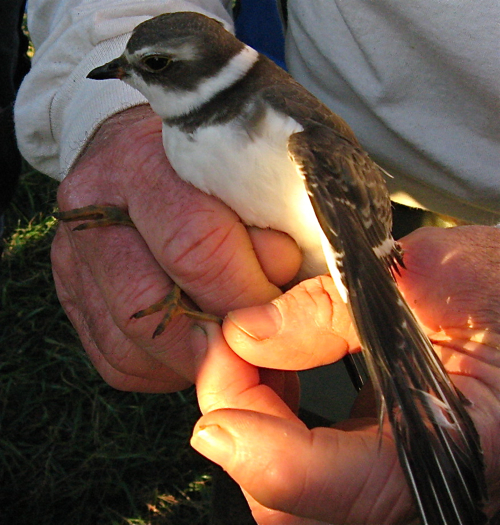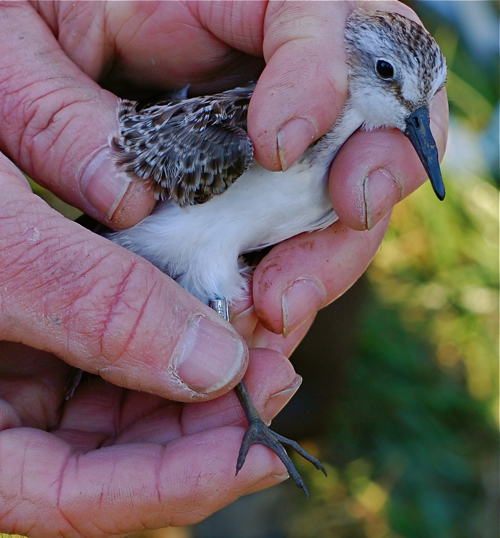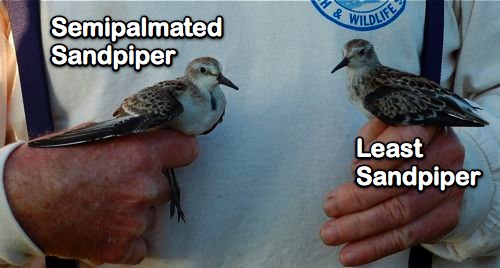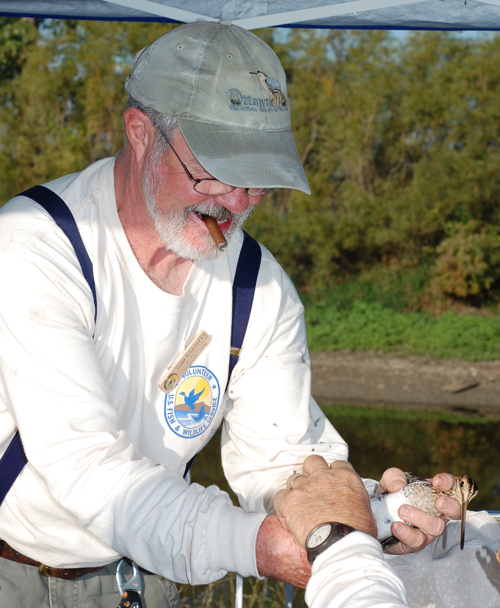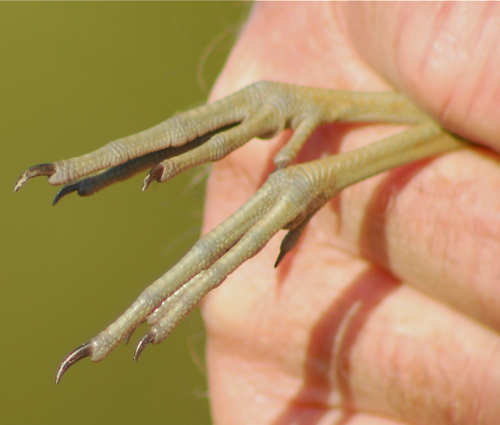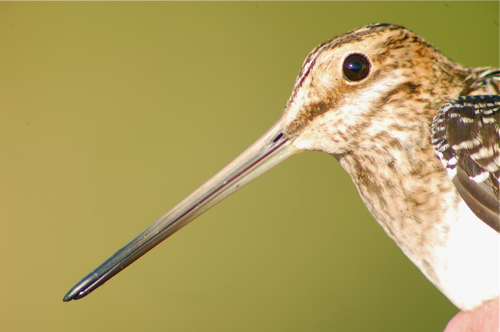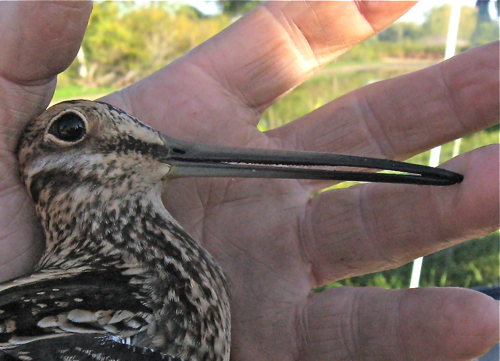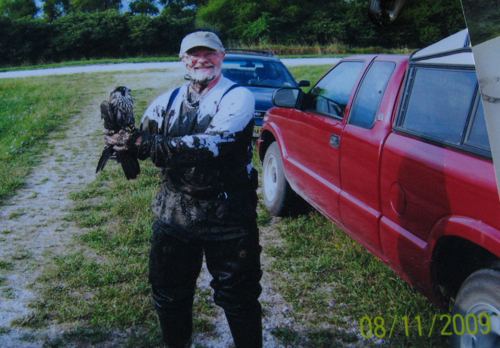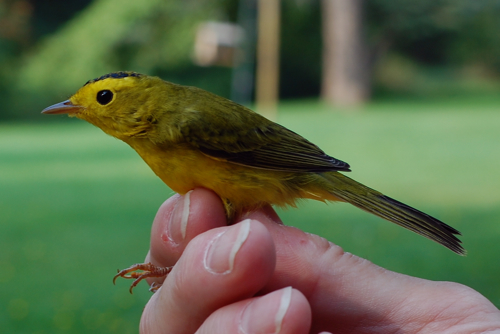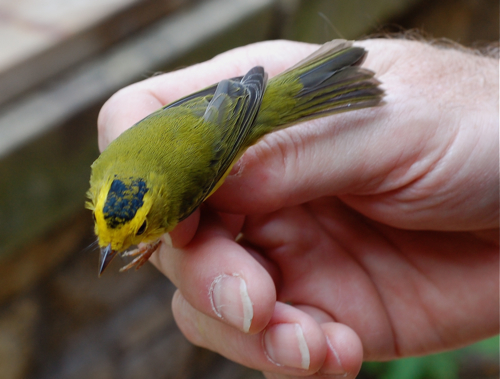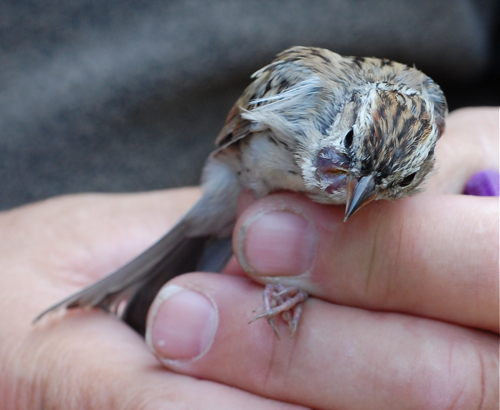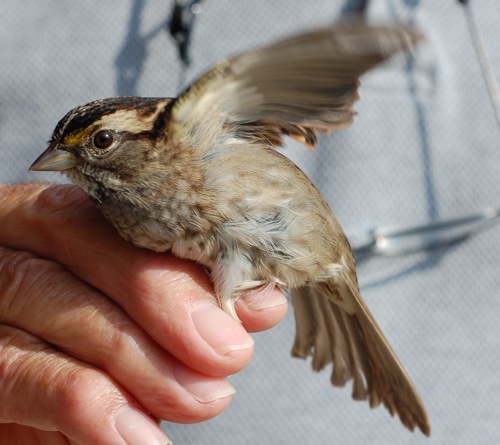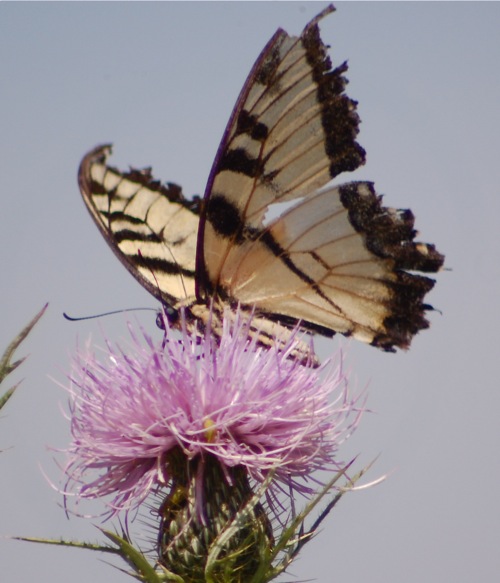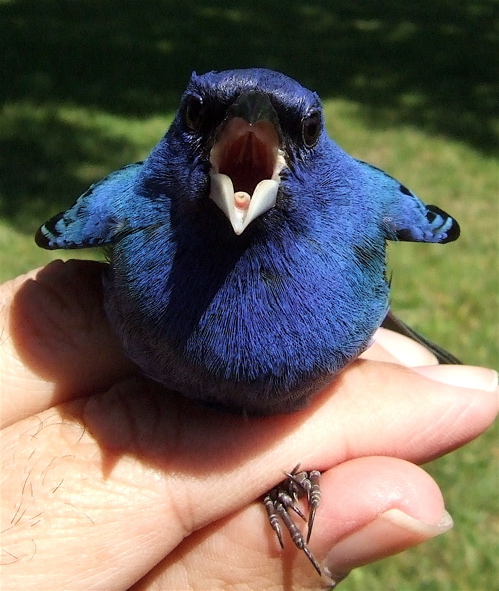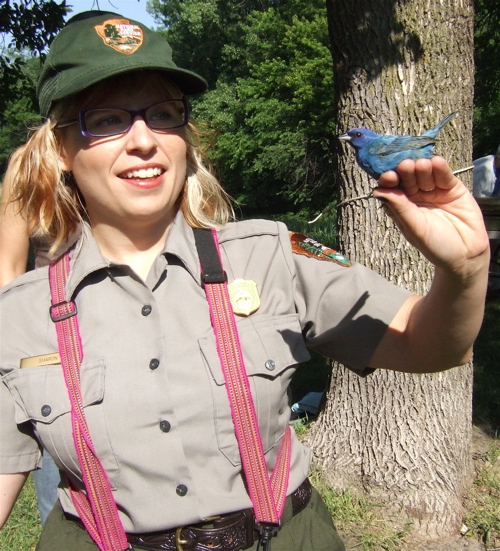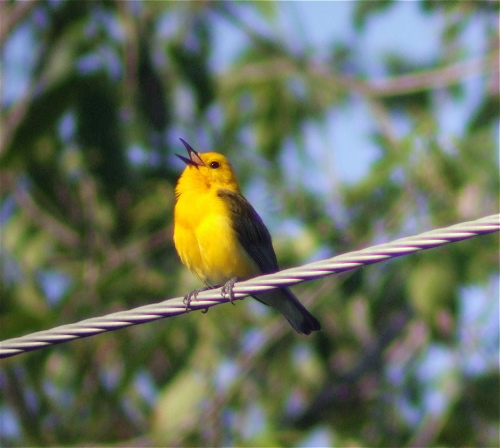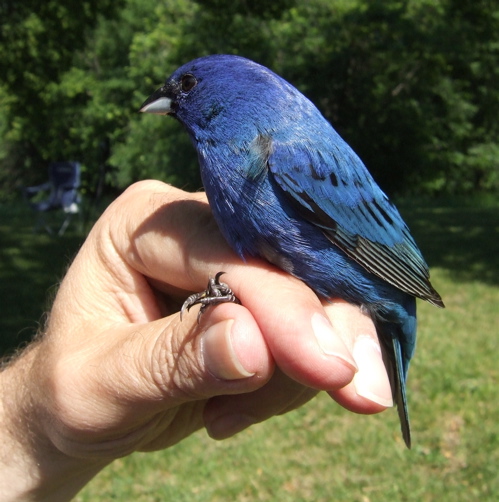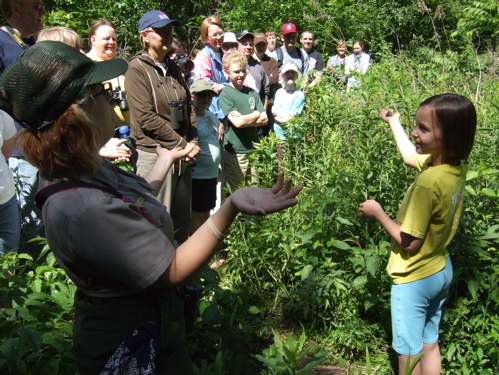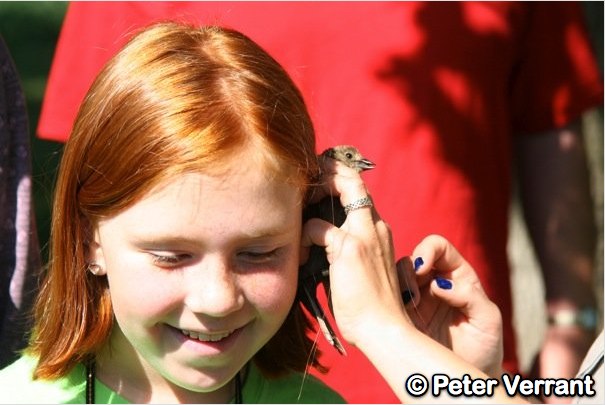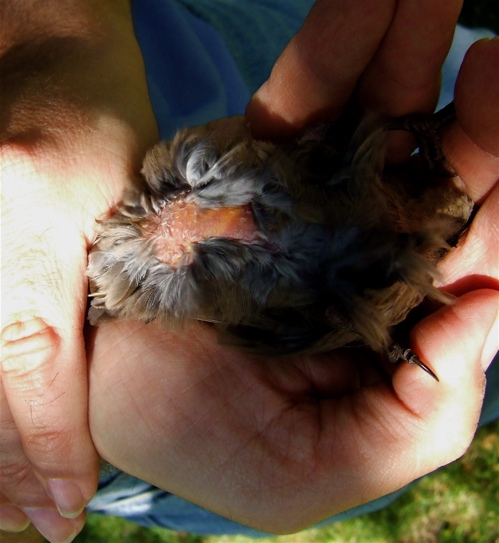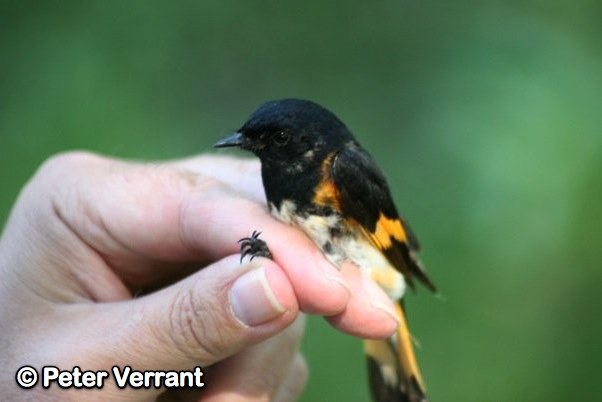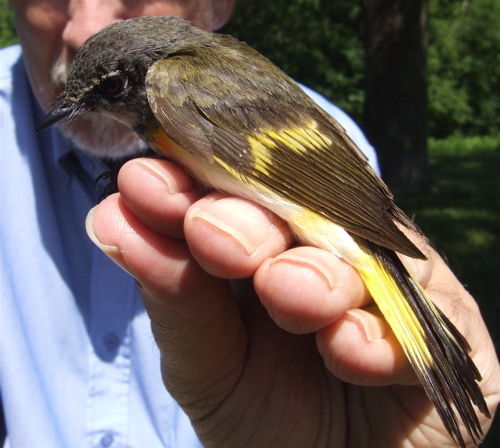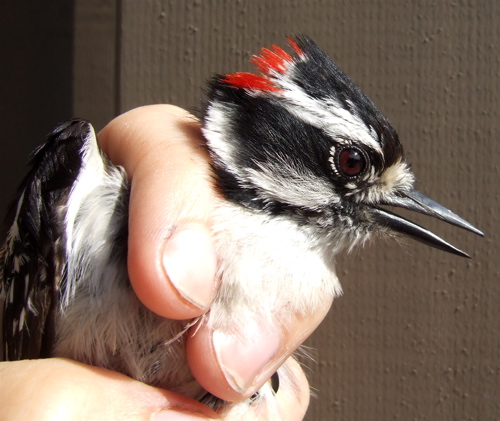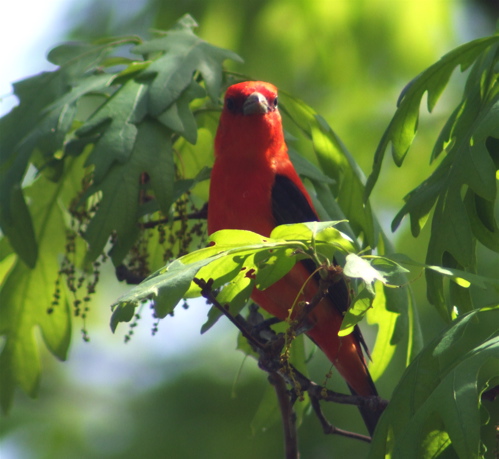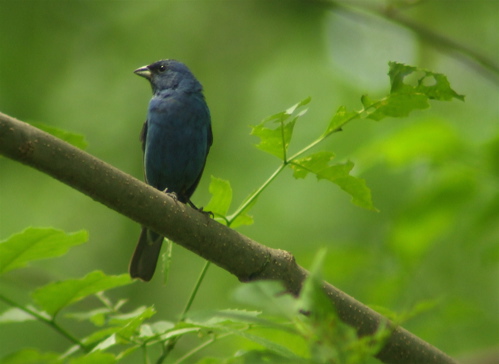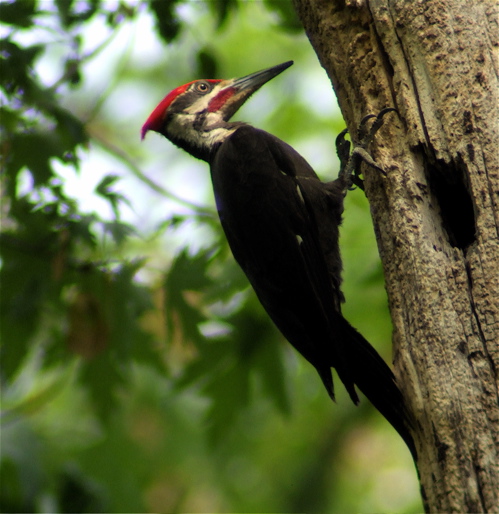 Minnesota was a little on the dry side this summer and autumn appears to be hell bent on making that up. It is non stop rain and that was certainly the case at Frank Taylor's banding station this weekend. Not that I mind, last weekend was great and we got in a good number of birds and we got to watch some great hawk flights and dives. And at the end of the day, a slow and rainy day in the blind beats any day behind a desk (and wearing uncomfortable government pants) so I was just happy to be there. The camaraderie was great and Frank let Amber and I sleep in his trailer. There's nothing quite like hearing the patter of rain on the roof to put you right to sleep.
Minnesota was a little on the dry side this summer and autumn appears to be hell bent on making that up. It is non stop rain and that was certainly the case at Frank Taylor's banding station this weekend. Not that I mind, last weekend was great and we got in a good number of birds and we got to watch some great hawk flights and dives. And at the end of the day, a slow and rainy day in the blind beats any day behind a desk (and wearing uncomfortable government pants) so I was just happy to be there. The camaraderie was great and Frank let Amber and I sleep in his trailer. There's nothing quite like hearing the patter of rain on the roof to put you right to sleep.
I thought for sure with the rain that we would get a peregrine in the nets--or at least see one, but alas we got skunked on the peregrine front. We did see a few merlins and one little tiny passage (hatch year) male came right in--and he was literally half the size of the pigeon. Ah, young males, so impetuous, they think they can take on the world...or at least a ginormous pigeon.
As we were about to let the merlin go, the rain picked up again--you can see it bead up on his head. He looks like he's screaming, "Okay, you have your darned photos, let's get this show on the road. Let me go!" And we did.
We did get in a few sharp-shinned hawks like the above adult male. I think we banded a total of four birds while I was there all day Saturday and for half the day on Sunday.
This sharp-shin is about to get a band on its leg. Considering how few birds we saw on Saturday, that wasn't a bad average. The rain kept raptors out of site. We did have a TON of migrants around us. The woods were still chock full of red-breasted nuthatches, yellow-rumped warblers, black-capped chickadees, ruby-crowned kinglets and palm warblers. You can see photos of some of those birds at my buddy Amber's blog. They were very responsive to pishing. I stood in the woods behind the blind, pished a little and the whole mixed flock dropped from the trees and eyed my warily. One red-breasted nuthatch landed briefly on my hat...of course, I did not have my camera with me. We also had a bunch of lapland longspurs flying around in front of us and it was amazing to watch them disappear into the grass when the flock finally landed. American pipits called frequently from overhead as they too worked their way south.
Adult sharp-shinned hawks are a thing of beauty with their orange fronts and dark blue backs, accented by a red eye. Even though we did not get many in, the few adults that landed in the nets were a treat to see up close. Normally, when we let birds go, I like to lay underneath the releaser and get a shot of the bird in flight from below. Usually, the releaser opens their hand on a count of three and the bird bolts.
This particular sharp-shinned hawk wasn't ready. It paused, just for a moment. I love the way it's looking behind, as if to say, "What now? You thought you wanted me to flap on five?" Don't worry, true to accipiter form and this bird's folk name of Little Blue Darter, it flapped in plenty of time and dove into the woods.
This was a passage (hatch year) male. Look at his little chicken legs! These hawks are so tiny in hand (blue jay sized) and are really skinny--like David Bowie circa Diamond Dogs skinny.
I hope I get to make it up one more time...I did not get a good goshawk fix at the blind.








